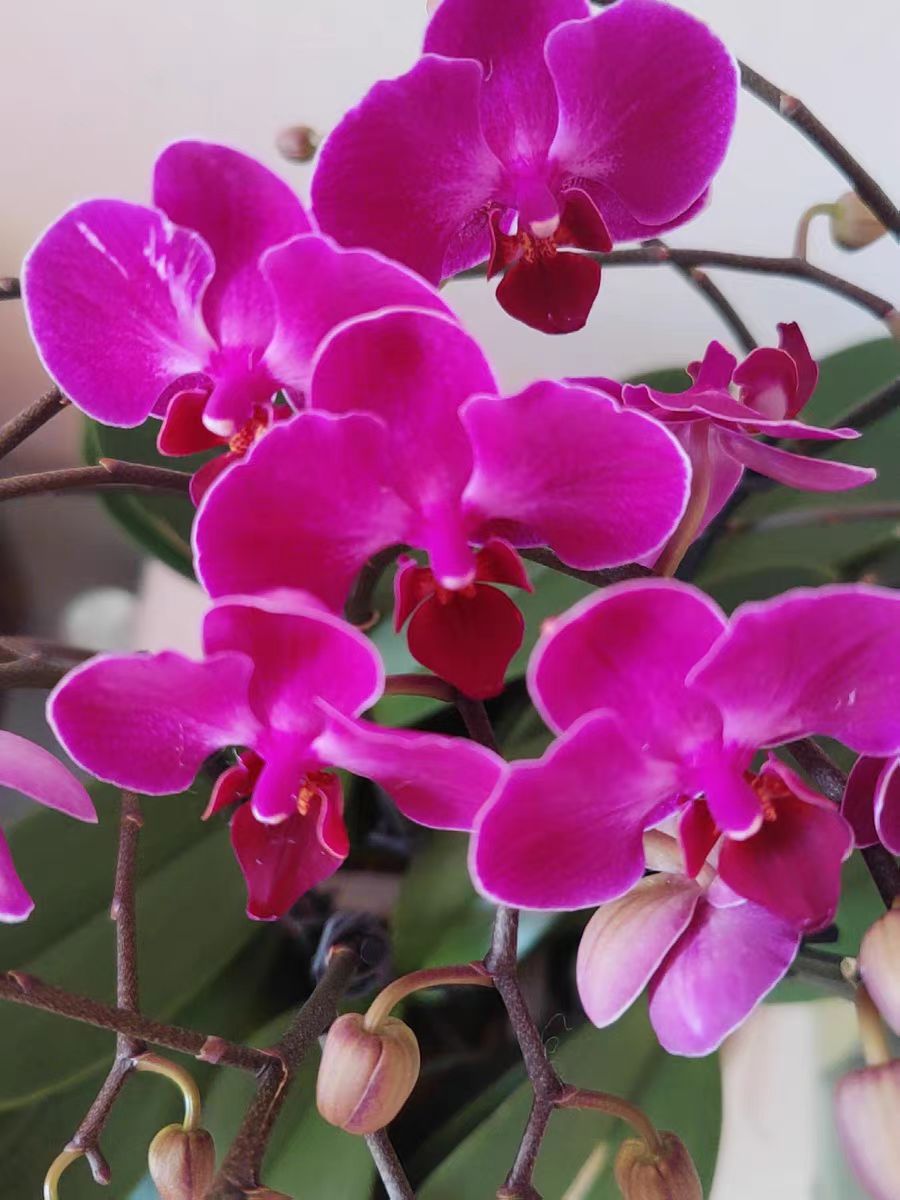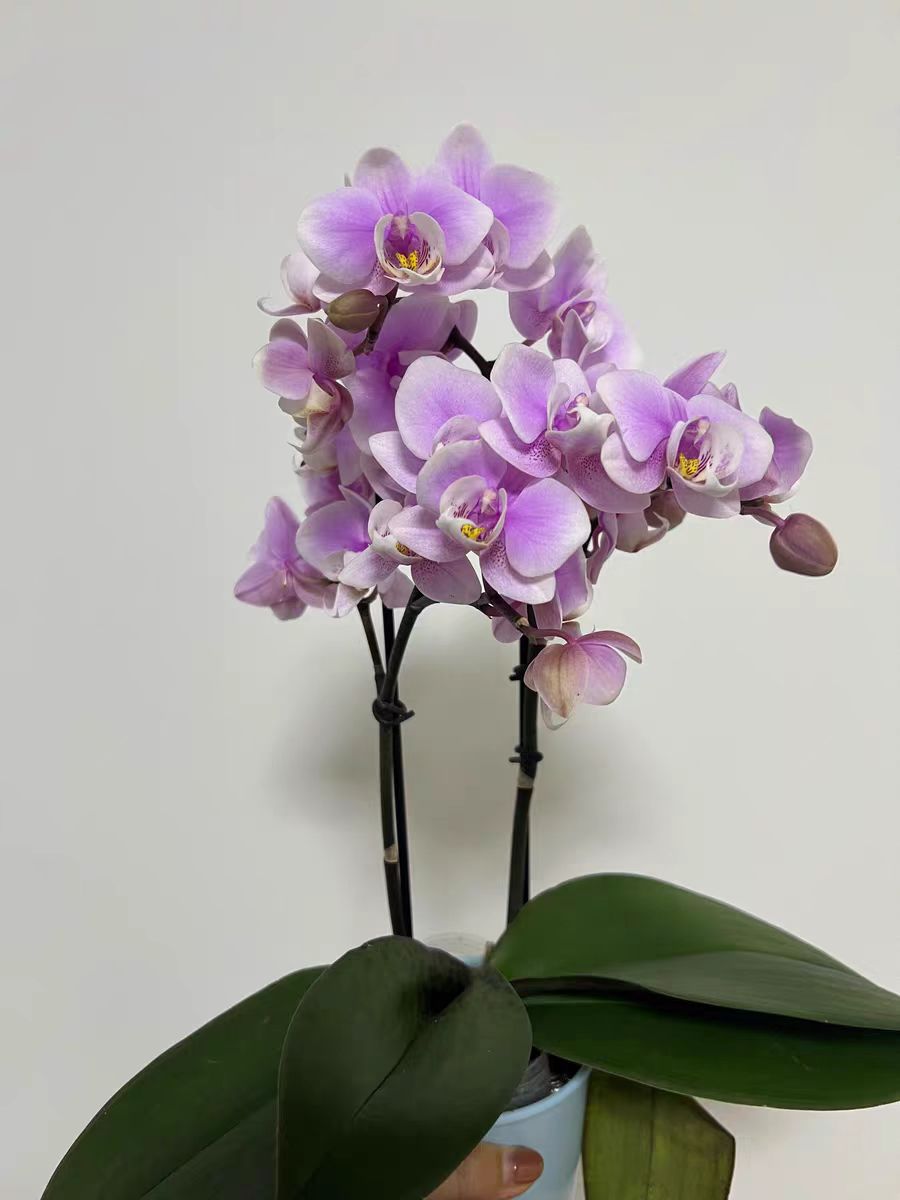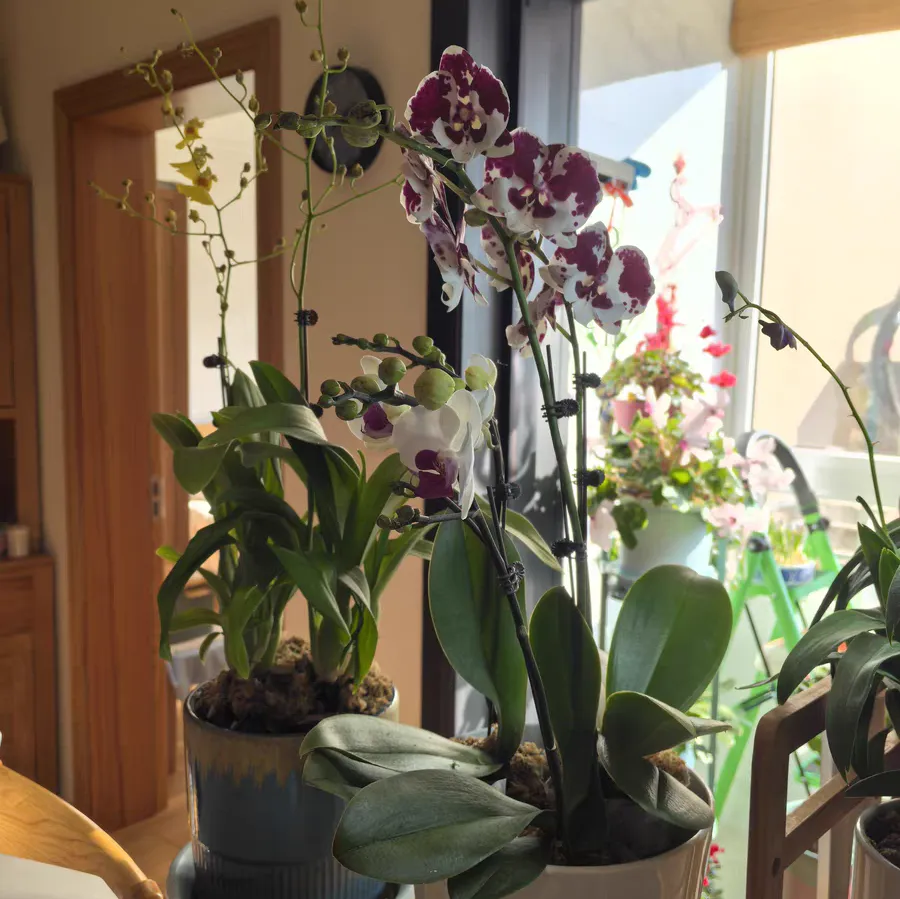During the process of caring for Phalaenopsis, improper fertilization often becomes an "invisible killer" that affects the healthy growth of the plant. In particular, over - fertilization is likely to cause fatal harm to Phalaenopsis. Can Phalaenopsis really die from over - fertilization? If unfortunately, over - fertilization occurs, how should we deal with it?
The harm of over - fertilization to Phalaenopsis cannot be ignored. Excessive application of fertilizers will cause a sharp increase in the salt concentration in the soil, which in turn will damage the roots of Phalaenopsis. The roots of Phalaenopsis are relatively sensitive. Once they are invaded by high - concentration salts, the phenomenon of "root burning" will occur. Specifically, the roots turn black and rot, and in severe cases, it may even lead to the death of the plant. In addition, over - fertilization will also cause the concentration of the soil solution to be too high, causing plant cells to lose water, the leaves to turn yellow, and the whole plant to show symptoms of wilting and water shortage.
Although over - fertilization does not necessarily lead to the immediate death of Phalaenopsis, in the long run, the growth of the plant will definitely be seriously affected, and it may even gradually weaken and die. Therefore, we must attach great importance to the fertilization problem of Phalaenopsis and follow the principle of "applying thin fertilizers frequently" to avoid over - fertilization.
Facing the problem of over - fertilization, we don't need to panic too much. As long as we take the correct countermeasures, we can effectively reduce the damage caused by fertilizers and even save the life of Phalaenopsis.
Immediately add water for dilution: Once over - fertilization is detected, water should be poured immediately to dilute the concentration of fertilizers in the soil. Pay attention to controlling the amount of water when watering to avoid waterlogging. By watering in small amounts multiple times, gradually reduce the salt concentration in the soil.
Rinse the plant: If the effect of watering for dilution is not obvious, the rinsing method can also be adopted. Pour water from the top of the plant to further dilute the concentration of fertilizers in the soil. When rinsing, pay attention to protecting the leaves and flowers of the plant to avoid mechanical damage.
Transplant and change the soil: If the plant has been severely damaged and the above methods cannot remedy it, then consider transplanting the plant into new soil. The new soil should be a loose, breathable, and well - drained substrate, and avoid applying fertilizers with too high a concentration again.
Observe and adjust: After taking countermeasures, closely observe the growth of the plant. If the plant gradually recovers, it indicates that the damage caused by fertilizers has been effectively controlled. If the plant still shows symptoms of wilting and water shortage, it is necessary to further adjust the maintenance strategy, such as increasing the frequency of watering and lowering the indoor temperature.
To avoid the recurrence of the problem of over - fertilization, we need to understand and master the correct method of fertilizing Phalaenopsis.
• Choose the right fertilizer: Phalaenopsis prefers fertilizers with a balanced proportion of nutrients such as nitrogen, phosphorus, and potassium. During the growth period, fertilizers mainly containing nitrogen and potassium can be selected, and during the flowering - promoting period, fertilizers mainly containing phosphorus and potassium can be chosen. At the same time, pay attention to choosing fertilizer products with reliable quality and clear ingredients.
• Control the frequency and concentration of fertilization: The fertilization of Phalaenopsis should follow the principle of "applying thin fertilizers frequently". Generally, fertilize once a week or every half - month, and the concentration of each fertilization should not be too high. It is more appropriate to dilute the concentration indicated on the package by about half.
• Pay attention to the timing of fertilization: The timing of fertilizing Phalaenopsis is also very important. Fertilization has the best effect in spring and autumn when the temperature is suitable and the plant is growing vigorously. Reduce or stop fertilization in winter or when the plant is growing poorly.
• Observe the plant's response: Pay attention to observing the plant's response after fertilization. If the plant shows symptoms such as yellowing leaves and wilting, it indicates that the fertilization may be too concentrated or improper, and it is necessary to adjust the fertilization strategy in a timely manner.
Over - fertilization of Phalaenopsis can indeed have a serious impact on the plant, but as long as we take the correct countermeasures and follow the correct fertilization method, we can effectively avoid this problem.
Can Phalaenopsis die from over - fertilization?

Share with
Tagged in :




Leave a Reply